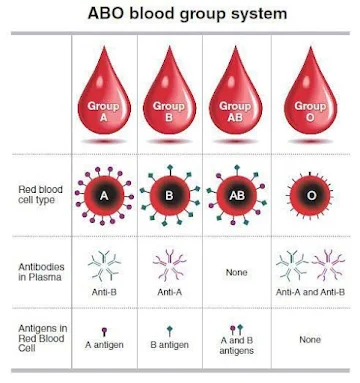Understanding human blood groups is vital in the fields of medicine, transfusion, and genetics. These groups categorize blood based on the presence or absence of certain antigens, leading to the classification of A, B, AB, and O blood types. Let’s delve into the fascinating world of human blood groups.
1. Blood Types
There are four main blood types:
- Type A: Individuals with A-type blood have A antigens on their red blood cells and anti-B antibodies in their plasma.
- Type B: Those with B-type blood have B antigens on their red blood cells and anti-A antibodies in their plasma.
- Type AB: AB-type individuals possess both A and B antigens on their red blood cells but have no anti-A or anti-B antibodies.
- Type O: People with O-type blood have no A or B antigens on their red blood cells but carry both anti-A and anti-B antibodies in their plasma.
2. The Rh Factor
Besides the ABO blood group, another critical antigen is the Rh factor (Rhesus factor). You can be Rh-positive (Rh+) or Rh-negative (Rh-), depending on the presence or absence of this antigen. In total, there are eight common blood types: A+, A-, B+, B-, AB+, AB-, O+, and O-.
3. Blood Compatibility
The ABO and Rh systems determine blood compatibility. For safe transfusions, the general rule is to match the ABO and Rh types. For example, individuals with type A+ blood are compatible with A+ or O+ donors. However, the reverse is not true – A+ individuals cannot receive A- blood.
4. Transfusion Considerations
Knowing your blood type is crucial when it comes to blood transfusions or organ transplants. Mismatched blood transfusions can lead to severe reactions, making it essential for healthcare professionals to double-check compatibility.
5. Genetic Inheritance
Blood types are inherited from our parents. Your genotype, represented as combinations of A, B, and O alleles, determines your blood group. For instance, AA or AO genotypes result in type A blood.
6. Global Distribution
The distribution of blood types varies worldwide. For example, type A is more common in Europe, type B in Asia, and type O in indigenous populations of the Americas.
7. Blood Type and Health
Emerging research suggests that blood type may influence certain health factors, such as susceptibility to specific diseases. However, these associations are still being studied.
8. Personal Blood Type Diet
Some diet programs claim that eating based on your blood type can improve your health and help with weight management. While there’s limited scientific evidence to support these claims, some individuals find these diets beneficial.
Understanding your blood group is not only critical for medical reasons but also intriguing from a genetic perspective. While it may not define your identity, it does play a vital role in the global tapestry of human genetics and transfusion medicine.

